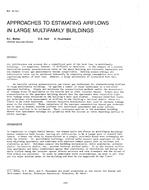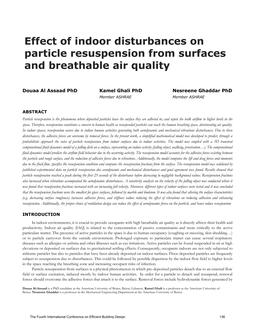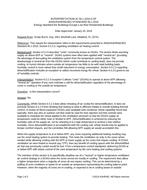As annual operating efficiency of vented heating equipment is affected by burner fuel and com-bustion air modulation, it is important to differentiate between the various types of controls in determining annual energy requirements. Test procedures for evaluating annual efficiency have already been developed and implemented by the Department of Energy (DOE) for furnaces with single-stage thermostat control. A modified test procedure is necessary to account for operation with fuel modulation. A revised procedure that accommodates two types of fuel-modulating controls has recently been developed. Tests are conducted at reduced and maximum firing rates, and part-load efficiencies for the two firing rates are calculated and weighted to obtain a weighted annual efficiency. A bin analysis of weather data is used to obtain outdoor average temperatures for calculating infiltration losses and for the weighting fractions used. These test methods and calculation procedures are based on and are an extension of the current DOE test procedures for the single-stage type of thermostat control of central warm air furnaces.
By using the procedures developed, the energy-savings impact of fuel-modulating controls when combined with the use of modulated combustion air is evaluated. Energy savings from 6% to 20% were determined from the increase in efficiency with both fuel and combustion air modulation. Improved efficiency was dependent on the type of thermostat control and the minimum-to-maximum fuel input, i.e., turndown ratio.
Citation: ASHRAE Transactions, 1983, vol. 89, pt. 1B, Atlantic City, NJ
Product Details
- Published:
- 1983
- Number of Pages:
- 18
- File Size:
- 1 file , 1.5 MB
- Product Code(s):
- D-AC-83-07-1


